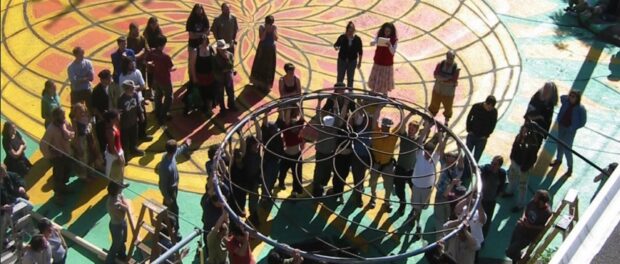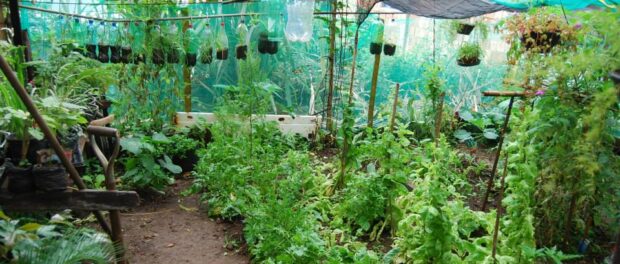
This is the first article in a two-part series reviewing the book ‘Social Sustainability, Climate Resilience and Community-Based Urban Development: What About the People?‘ by Cathy Baldwin (University of Oxford) and Robin King (World Resources Institute), and how it informs thinking about Rio’s favelas. Read part 2 here.
Rio de Janeiro’s favelas are increasingly recognized as innovators in community-based sustainability projects. In Vale Encantado residents have constructed biodigesters and community gardens and limited their own construction to protect the natural environment around them. In Vila Autódromo residents planted trees to build the local ecosystem, provide a natural source of fruit, and offer shade to pedestrians. In Morro da Formiga residents run cooperatively-managed water infrastructure alongside horticulture and beekeeping initiatives. However, not all favelas have residents who’ve taken the same active initiative in community and environmental development. The book What About the People? The Socially Sustainable, Resilient Community and Urban Development, by Cathy Baldwin (University of Oxford) and Robin King (World Resources Institute), would attribute the difference to the level of social sustainability in the communities.
King and Baldwin argue that a community is socially sustainable* in so far as the “neighbourhood supports individual and collective wellbeing.” The more people within the neighborhood see themselves as a collective, the more likely they are to come together to promote “economic, social, and cultural conditions” that the community has deemed worthy to be “preserved for future generations.” This support is influenced by the physical design of the space, the environmental sustainability of the community, or perhaps most importantly, the social cohesion of the people that make up the community.
“Social cohesion* happens when people from the same community or society get along, trust each other, and live peacefully together with or without social or ethnic differences. This is supported by economic equality and inclusion, democracy, people having their basic needs met, and social solidarity between people.” These conditions create social capital within a community. Social capital* is the way social scientists describe the group of benefits that come from consistent social norms and trust built through regular interaction within a community. Social capital is one of the key necessary factors for establishing a sustainable community.
Social sustainability in Rio de Janeiro
The built environment aspect of social sustainability described in the book is particularly relevant in regards to Rio de Janeiro’s favelas. According to the authors, a built environment that encourages social cohesion promotes an “active street life through ‘varied and functional streetscapes.’” The authors demonstrate how the spatial features of different neighborhoods in Buenos Aires, Argentina, and in Delhi, India, influenced the quality of residents’ interactions and relationships with each other as well as their collective capacity to produce change. Interestingly but not surprisingly, the majority of the spatial characteristics presented in the book are found throughout most of Rio’s favelas. For instance, the authors point out how the proximity of houses and windows, a key feature in most favelas, promotes social interaction, contributing to the neighborhood’s social capital and cohesion, its sense of place and sense of community, and consequently, its social sustainability. They have active commercial streets that promote regular social interaction. Many favelas also boast central community gathering places that were established by the community long before city government concerned itself with upgrading favela structures.
Social cohesion is also an interesting aspect to consider in light of favelas. Community members demonstrate trust in each other and operate with social norms across the neighborhood. Each favela has unique social norms that shape the way the community engages among residents. This is evident in communities that organize against forced evictions. They fight against losing not only their homes, but their entire way of life. Social cohesion, access to information about their rights, broad networks of support, and other keys to successful resistance empowered them to resist—some more successfully than others, perhaps directly reflecting the pre-existing levels of social cohesion. These evictions, dispersing the community across neighborhoods throughout the city, stripped those removed from their homes of their social capital, forcing them to begin from scratch and develop new bonds of trust and social norms in unfamiliar communities.
Brazilian favelas also uniquely create social capital. While social capital is very present within each favela (Bonding Social Capital*), creating a network of communities across the city is a way of creating Horizontal Social Capital*. This form of social capital is built between similar communities that share similar values and experiences. This type of unity creates a foundation for city-wide social movements, with favela residents as the base for a grassroots movement throughout the city.
Community resilience in the face of adversity
Resilience when faced with large scale adversity, from forced evictions to natural disasters, is a critical outcome of social sustainability. The authors define community resilience* as “the existence, development, and engagement of community resources by community members to thrive in an environment characterized by change, uncertainty, unpredictability, and surprise.” Resources include community infrastructure—spaces or venues that promote community life. These spaces include shops, parks, libraries, cafes, and bars within the neighborhood, and any other places that help foster social networks and community leadership. Residents of communities that have a foundational network of relationships are more likely to “knock on neighbors’ doors to check up on their well being” and use outdoor spaces “to meet their accommodation and organizational needs.”
Developing a community’s capacity for resilience relies on the following key principles:
- Focusing on a community’s resources, not deficits
- Emphasizing the community’s knowledge of itself
- Creating social learning and capacity-building opportunities
- Organizing participatory community projects
- Ensuring the inclusion of members from all social groups represented in the community
*Glossary
Community resilience: The existence, development, and engagement of community resources by community members to thrive in an environment characterized by change, uncertainty, unpredictability, and surprise.
Social capital: A key factor in building a sustainable community, social capital is the group of benefits that come from consistent social norms and trust built through regular interaction within a community.
- Bonding Social Capital: social capital within a community.
- Horizontal Social Capital: social capital across a network of communities.
Social cohesion: When people from the same community or society get along, trust each other, and live peacefully together with or without social or ethnic differences, supported by economic equality and inclusion, democracy, people having their basic needs met, and social solidarity.
Socially sustainable: When the neighborhood supports individual and collective wellbeing.
This is the first article in a two-part series reviewing the book ‘Social Sustainability, Climate Resilience and Community-Based Urban Development: What About the People?‘ by Cathy Baldwin (University of Oxford) and Robin King (World Resources Institute), and how it informs thinking about Rio’s favelas. Read part 2 here.

